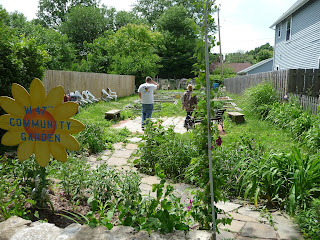ALE Lab was published! The article titled: Vacant land conversion to community gardens: influences on generalist arthropod predators and biocontrol services in urban greenspaces, was published in Urban Ecosystems over the weekend.
Abstract: Due to economic decline and the recent rise in home foreclosure, many U.S. cities are faced with managing large acreages of vacant land. Interest in local food production on this land has the potential to dramatically reshape the composition of greenspace found within urban landscapes. This study examined how the conversion of vacant land to urban gardens and farms influenced arthropod generalist predator populations and their ability to support biocontrol services. We found that the abundance of Coccinellidae and Syrphidae, and the activity density of Carabidae, Formicidae, and Lycosidae were equivalent among vacant lot and urban garden sites. Dolichopodidae abundance and the activity density of Linyphiidae and Opiliones were reduced in urban gardens whereas Anthocoridae abundance and the activity density of Staphylinidae were greater within urban gardens relative to vacant lots. The biocontrol service supplied by generalist predators was measured using sentinel eggs (Helicoverpa zea (Noctuiidae)) and pupae (Sarcophaga bullata (Sarcophagidae) and Musca domestica (Muscidae)).We found no difference in the biocontrol of H. zea eggs or M. domestica pupae among the focal greenspaces. We found no difference in the removal of S. bullata pupae by predators in June 2010, whereas in August 2010 a greater proportion of pupae were removed in urban garden sites relative to vacant lots. Based on these findings, we discuss the potential of the urban landscape to support generalist predators and sustainable urban gardening and farming.
 |
| Urban Garden |
 |
| Urban Garden |
 |
| Urban Garden |
 |
| Vacant Lot |
 |
| Vacant Lot |


No comments:
Post a Comment